Bedroom interior design in lilac colors
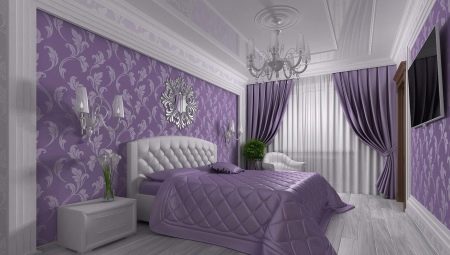
Lilac can often be found in bedroom designs. If you decide to take this color as a basis, you need to carefully consider the subtleties of decoration, the arrangement of furniture and the choice of decor. In this article, you will learn about the features of lilac in the interior and winning color combinations.

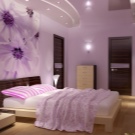
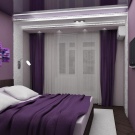
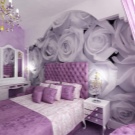
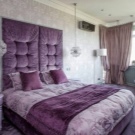

Color features
Lilac tone is a complex and ambiguous color. In traditional color, it is customary to associate it with a secret. primarily because, depending on the lighting, lilac manifests itself in very different ways - it can appear almost blue or pink.
In modern interior design, it is one of the favorite colors for bedroom decoration. Lilac is moderately calm, but not boring, gentle, pleasant to the eye and conducive to a quiet rest.
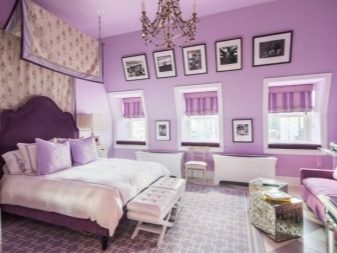

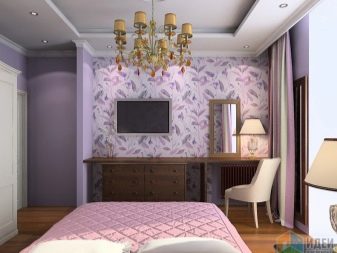
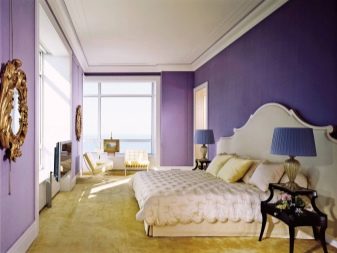
The meaning of the lilac tone can vary - each person will have their own associations for him. For some, this is the color of a fresh spring bouquet, while for others it will seem like the sky at sunset. One way or another, usually these are pleasant romantic associations that set you up for a positive mood and healthy sleep.
In the arrangement of bedrooms, lilac appears very often both as the main color and as an addition to others.

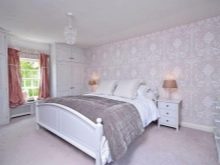
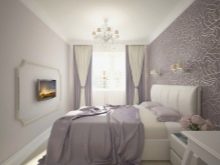
Lilac has a number of significant advantages that are loved by many.
- Light colors of lilac contribute to the visual expansion of the room's space. This is an excellent solution for a small bedroom.
- Lilac goes well with many other colors. At the same time, thanks to these combinations, you can create completely different options for interiors.If you want the most relaxed atmosphere in the bedroom, you can successfully combine different shades of purple with each other. If you want variety and dynamics, you can dilute it with rich and contrasting accents.
- Lilac is an exquisite but rather unpretentious color that does not require much effort in cleaning. Since this is a complex composite tone, little dirt is not very noticeable on it.
- Lilac is known for its positive impact on humans. It is very calm and stress-relieving, as it consists of a combination of two of the most delicate colors - blue and pink. It is also believed that shades of lilac contribute to the development of imagination and the disclosure of creativity.
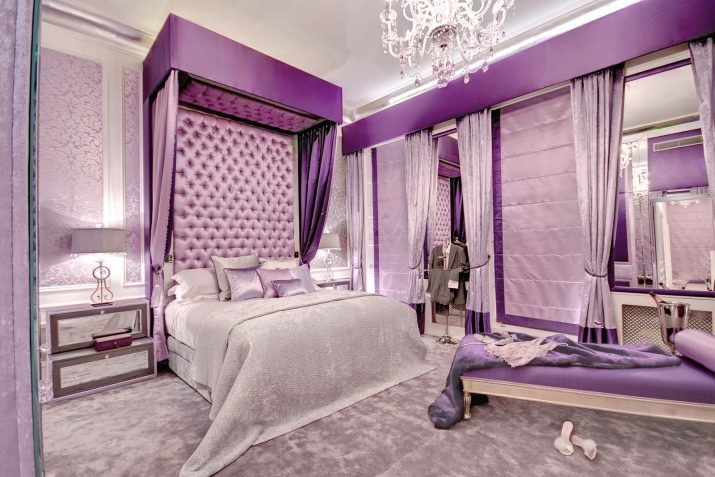

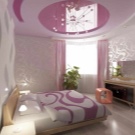
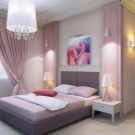

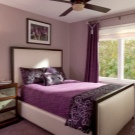
At the same time, several disadvantages of lilac in the interior can be noted.
- First of all, it is a cold color, which can make a room too sterile and uninhabited in appearance. This is especially true for trendy minimalist interiors - you should be very careful with the details. It is important to personalize the lilac space with personal items and beautiful accessories - then it will really be cozy.
- Very often this color is considered feminine, and men in a completely lilac bedroom can feel uncomfortable. However, color combinations in modern interiors refute this. You can find a compromise, add gray and brown tones, slightly simplify the design - and everyone will be happy with such a bedroom.
- Lilac should be carefully combined with simple bright colors. An abundance of red, yellow, or bright blue combined with lilac often overrides this delicate color and just looks tasteless. Therefore, all interior details must be carefully thought out. If you want to buy a new thing for the finished interior, you should take samples of your shade of lilac with you and evaluate the combination with the new color.
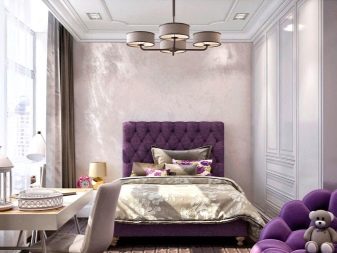
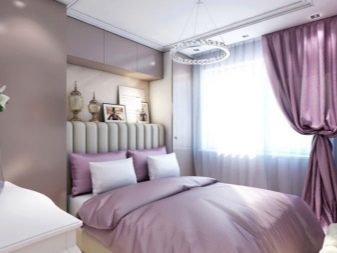


Combination rules
Lilac is interesting to combine with many other shades of color. Let's take a look at several possible color combinations.
- If you want the most delicate and airy interior for the bedroom, you should consider the monochrome option - for this you need to stick to colors that are close in gamut to lilac. It can be dark purple, lavender, blue-pink, gray-purple, and other variations. First of all, you need to determine whether the bulk of the color shades will be dark or light.
Determine 2-3 dominant tones, and you can match any number of different colors from the lilac range to them - they will all look good.
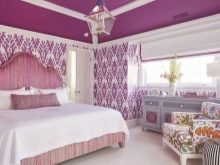
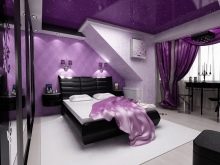
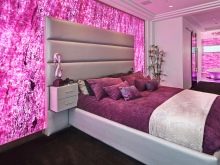
- The light pastel shade of lilac can be combined with other powdery tones to create a graceful, light interior. For example, very often take a beige, gray-brown, milky white shade. The aristocratic combination of pale colors will create a solemn and calm atmosphere in the room, conducive to pleasant relaxation.
This is a great option for a small bedroom - the space will seem larger and filled with light due to light contrasts of warm and cold pastel shades.
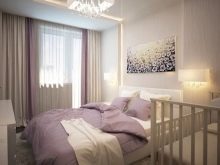

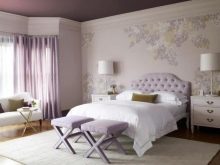
- If you want to create a dynamic and life-affirming interior based on light lilac tones, you should combine them with darker colors. Dark green, black-blue, burgundy and dark brown are considered the most successful.
These colors will become catchy accents, help diversify the design and even zone the room. Designers recommend such combinations for spacious bedrooms.
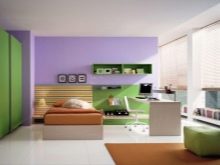


- If you like dark lilac shades, they can also be successfully combined with other light ones. Peach, lemon or ocher tone looks very elegant. To add space to the room, place warm light tones at the entrance, and cold lilac tones at the back of the room.
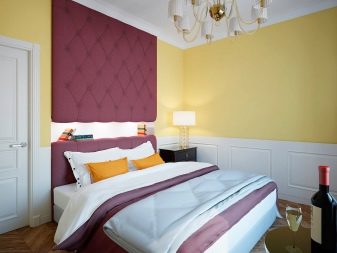
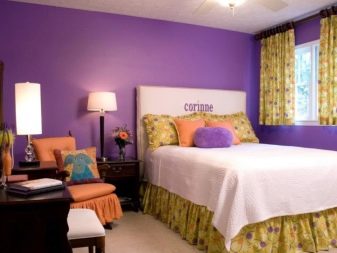
- You can combine dark lilac with dark colors.That being said, make sure the room is spacious and light - with large windows and multiple light sources. In this case, it is worth experimenting with dark, warm shades - for example, it can be olive or terracotta.
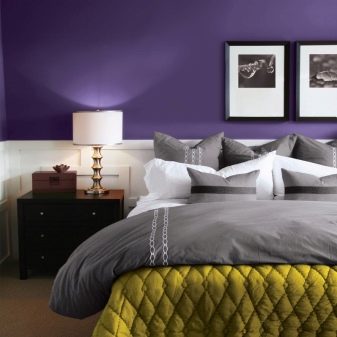
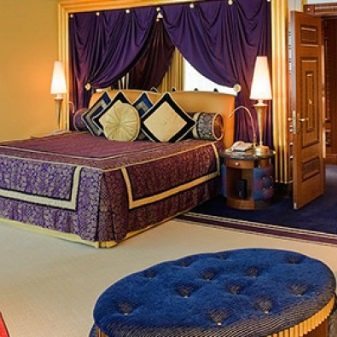
- For those who lack bright fresh notes in life, a purple interior with bright accents may be suitable. Orange, light green and turquoise will look great.
However, such combinations should not be overused - there should be no more than two or three accents in a medium-sized room.
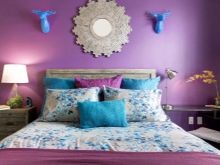
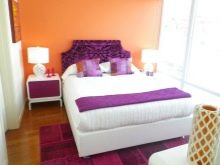
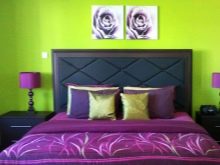
Styles
The interior design is extremely diverse - in order to decide on the finishing materials and furniture, choose the style of your interior. Lilac will easily fit into several styles.
- Can withstand the interior in neoclassical style... If white predominates in the classics, in later styles they just began to give preference to blue-pink colors.
Mostly it is worth considering dark shades of lilac, although their combination with light ones is also possible. Consider dark woods, silvers, dark blues and beige as complements.

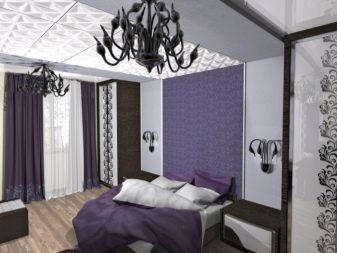


- If you have always dreamed of living in France, do not miss the chance to decorate the interior in provence style... Lilac is a fresh and springy color that will give you an authentic French village atmosphere.
Wooden furniture, floral ornaments, light textiles and simple accessories - all this will create an exquisite interior.

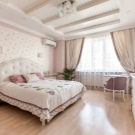
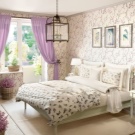
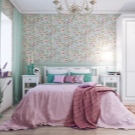
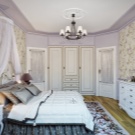
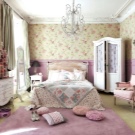
- Modern minimalism will suit you too - it is characterized by simple shapes, but extraordinary combinations of colors and textures.
Wood, metal, textiles and tiles can complement each other in an interesting way. For colors, consider burgundy, gray, and beige.
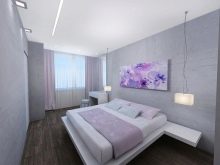

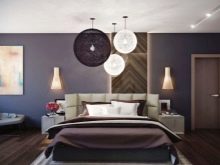
- You can create a stylish interior option based on lilac in scandinavian style... This allows you to achieve a simple, sustainable and functional design.
To do this, lilac should be combined with white, choose wooden pieces of furniture and do not overuse details.
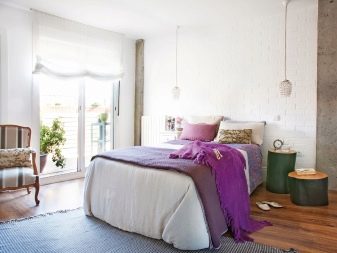
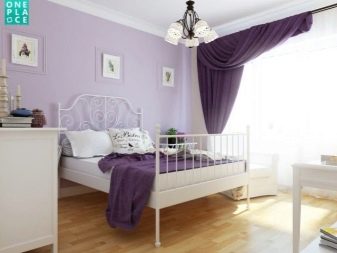
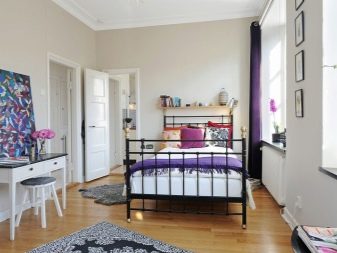
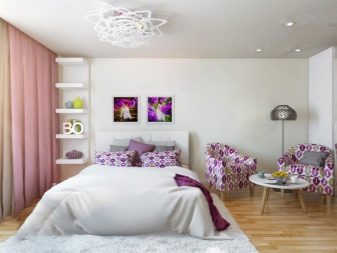
Finishing options
Entering a room, we first of all turn our attention to the decoration. The color of the walls determines the first impression of the interior, and the finishing of the ceiling and floor completes the design. Choose a finishing option for your room, and only then purchase furniture.
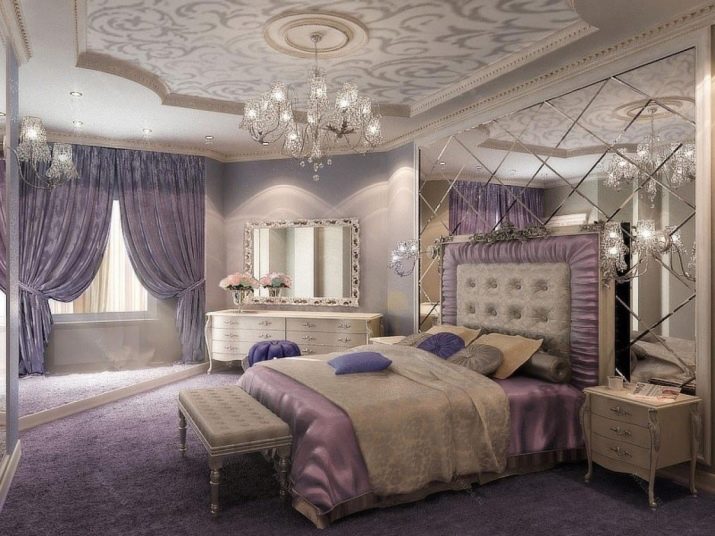
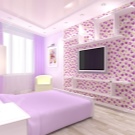
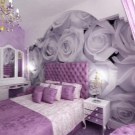
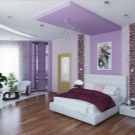

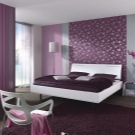
If you are thinking about wall decoration, the easiest option is wallpaper. Now there are a huge number of them: smooth and textured, with a pattern or plain, textile wallpaper or photo wallpaper - all this can become an excellent basis for an interior with minimal investment. If you have perfectly flat walls, you can paint them. - a combination of several similar shades on different walls will look great. Finally, the walls can be tiled or mosaic.
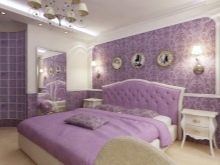
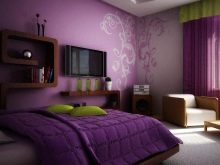
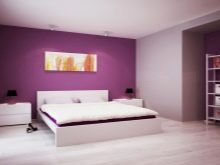
If you are thinking of a full-fledged renovation, you should take care of the floor finish. Both dark and light wood can be suitable for lilac, but it is better to avoid warm tones.
Most often they use laminate or parquet. The tiles will be too cold and the carpet needs regular gentle maintenance.
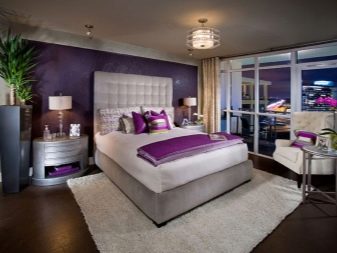
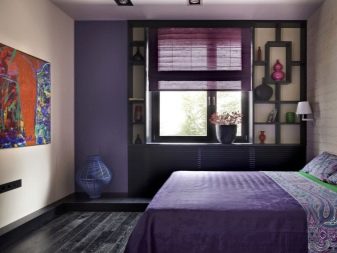
Many are now doing stretch ceiling - this is especially true for large rooms, where there will be many light sources: the tension structure provides many opportunities for experiments. In a small bedroom, you can simply whitewash the ceiling or lay out with plastic panels. The use of wooden beams can look beautiful.


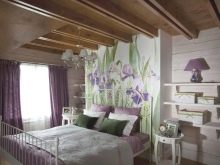
Organization of lighting
Interior light is very important. In a small room, everything is quite simple - one powerful chandelier is enough to provide enough light. However, if you want even lighting, you can distribute the lamps along the ceiling or walls.
Light can help zone a room. If you want to visually divide a large bedroom into several parts, you need several light sources.
For the rest, proceed from considerations of practicality - for example, you may need additional light by the bed or at the dressing table.

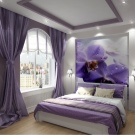
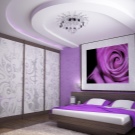
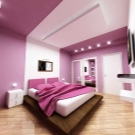
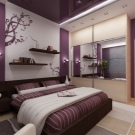

Furniture
Furniture is also very important for the perception of the interior. Any bedroom has at least a bed, a chest of drawers and a wardrobe. You can complement this set with a sideboard, ottoman, dressing table and chests - depending on your needs and the possibilities of your space. Furniture can be lilac, like finishes, but other colors can be chosen.
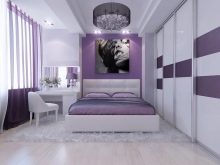
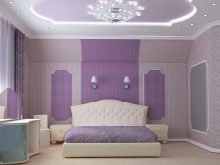

Large pieces of furniture should not be too bright, otherwise they will draw attention to themselves. If you want to highlight a small shelf or cabinet, on the contrary, it can be successfully made in contrast. Pink, purple, white, gray or cream furniture is suitable for lilac finishes, and natural wood colors always look good.
In modern interiors, plastic furniture is often chosen. - glossy surfaces look great - they reflect light and expand the space. For the same reason, exterior mirrors should be used in small bedrooms.
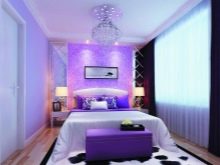
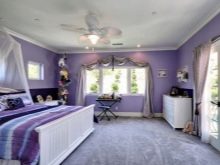

Consider the size of the room when choosing furniture. If your space is small, consider a ceiling-to-ceiling corner wardrobe to save space. The large bedroom can accommodate a large dressing room. Place the rest of the furniture along the walls and in the corners for a comfortable and spacious space in the center.
In the choice of furniture and its arrangement, one should proceed from considerations of practicality - first acquire and arrange the most necessary things, and then supplement it with small elements.
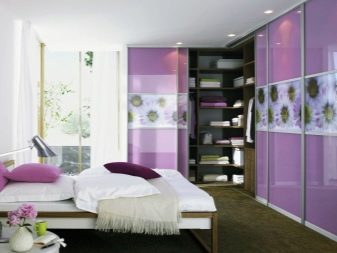

Textiles and decor elements
Textiles are of great importance in the design of the bedroom. Usually these are tulle, night curtains, bedding, bedspread and pillows. Sometimes carpets, upholstery and other items are present. Most often, delicate flying fabrics are suitable for romantic lilac interiors. - for example, satin, silk, lace are used. Nevertheless, non-standard options fit into some types of modern interiors - for example, linen.
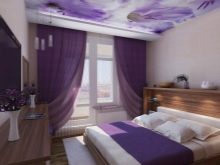
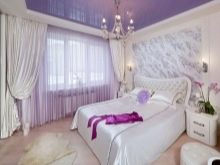

The textiles in the bedroom take up a considerable area - they cover the bed and curtain the windows. Therefore, the perception of the interior will also largely depend on it. Often, it is textiles that are used as an accent - if you have a monochrome bedroom, you can make the curtains and bedspread bright, and if you have kept the entire interior in light colors, it may lack dark spots - for this you should take a dark fabric.
Many are afraid that textiles will stand out from the whole interior if you make it different. Nevertheless, this problem can also be solved. For example, you can take not a plain fabric, but a variant with an ornament, where purple will coexist with a contrasting color. This way all the elements of your design will play in a single ensemble.
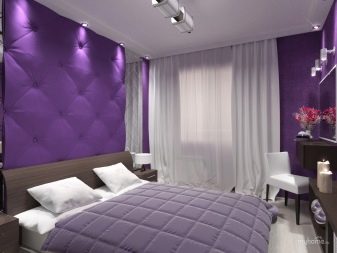

Sometimes in the interior design of the bedroom, insufficient attention is paid to bedding - after all, it is not visible when the bed is made. However, it is very important that it also blends in with the rest of the room. After all, the bedroom is a place to sleep: it is important that beautiful color combinations surround you even at night. Depending on the type of interior, you can choose plain linen, with floral or abstract patterns.
It does not have to be exactly lilac - other pastel colors are often well suited, such as beige, gray, pink, blue, emerald, peach, whitish.
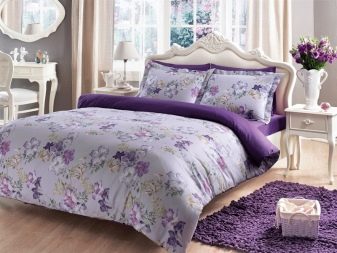
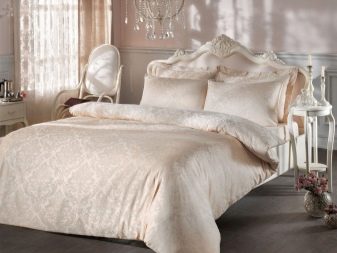
Successful examples
If you have not yet decided on the design of your bedroom in shades of lilac, look at the successful works from professional designers. Their findings will surely inspire your own ideas.
- If you can't decide on one style, try eclecticism based on neoclassicism... Here, traditional luxury elements of the late classical style are combined with modern accessories.Textile wallpapers with floral ornaments look very good - they give the interior a solemnity, making it not boring due to its complex texture.
Lilac can be interestingly combined with pink, red and black tones, but there should not be too many color accents.
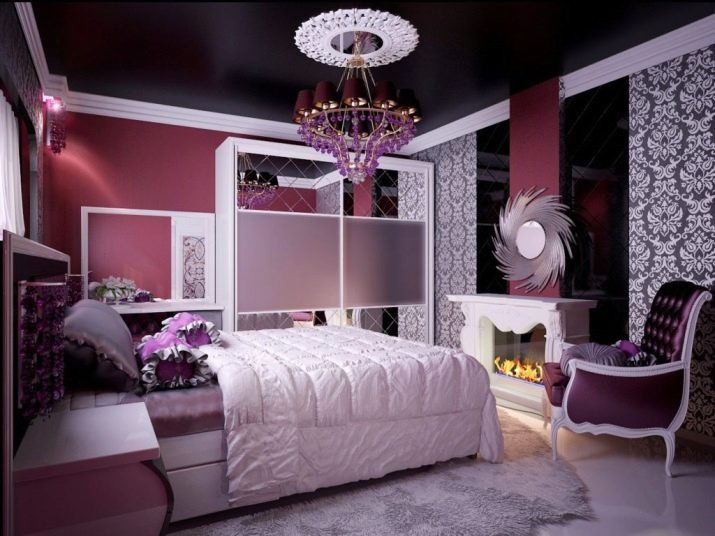
- Modern lilac bedroom can be very concise. Such a design will look modern, even if the furniture design tends to be more traditional. Moreover, so that such an interior is not boring, you need to take complex composite shades. A slightly dusty floral tone in combination with a warm cream color does an excellent job of its function - with a minimum of details, the interior looks very interesting.
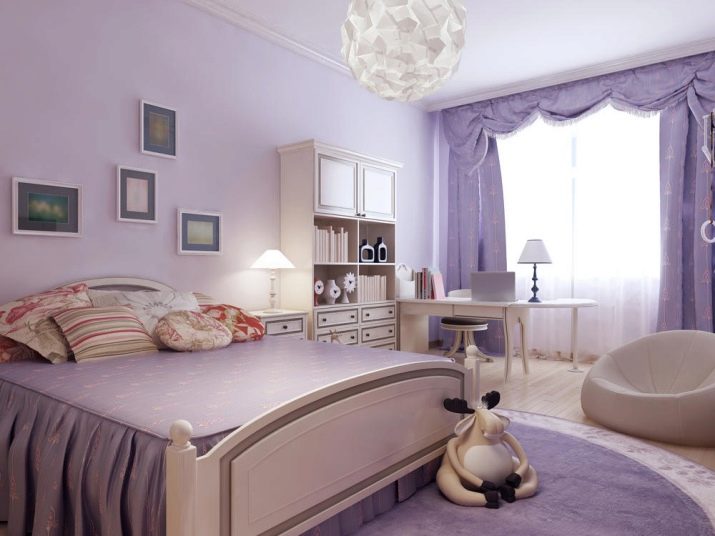
- White, beige and lilac - an excellent harmonious combination that will provide comfort in the room. If you look closely, you will notice that the main part of the room is finished in beige, but the design is perceived as lilac. This is because lilac is the dominant color and beige is the background color.









